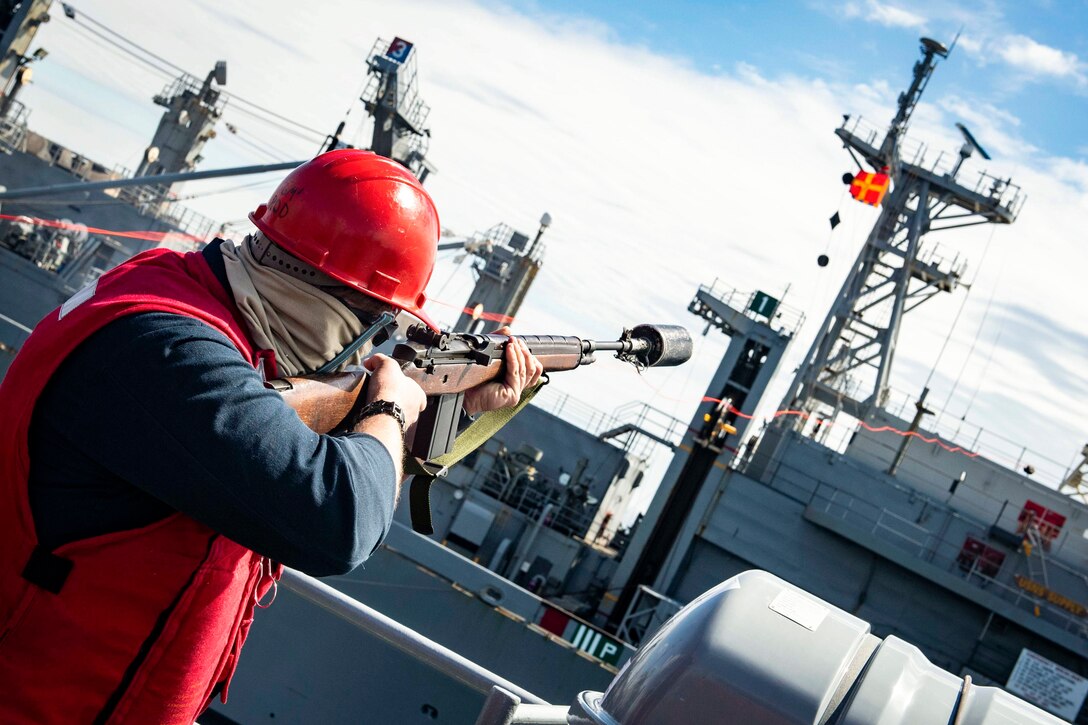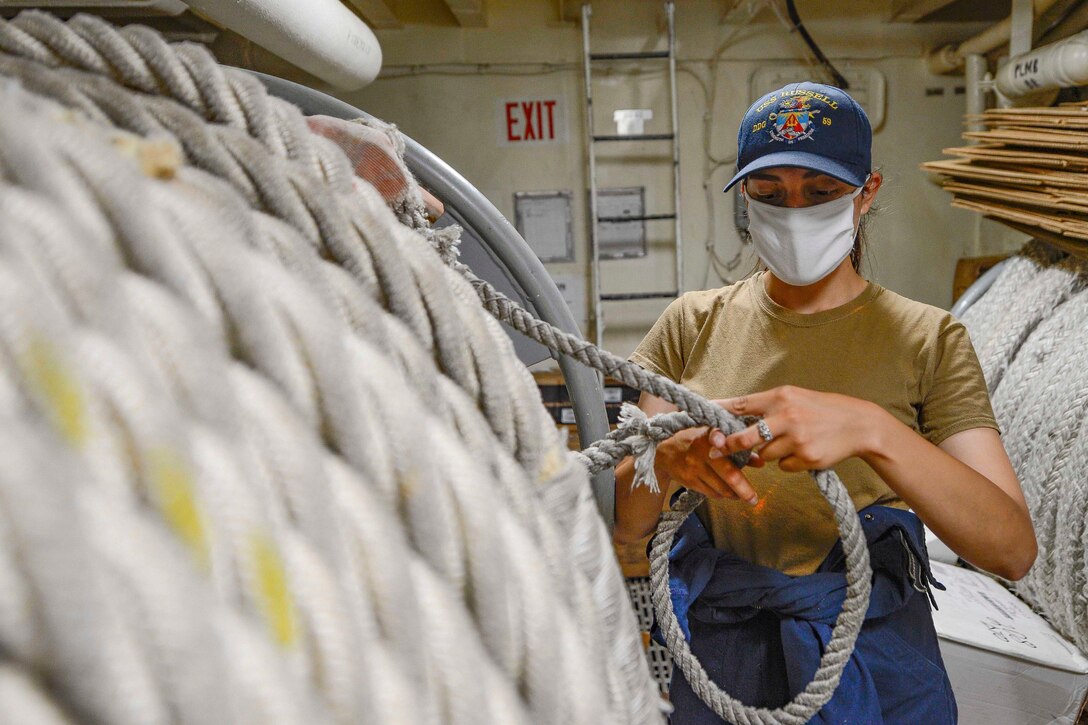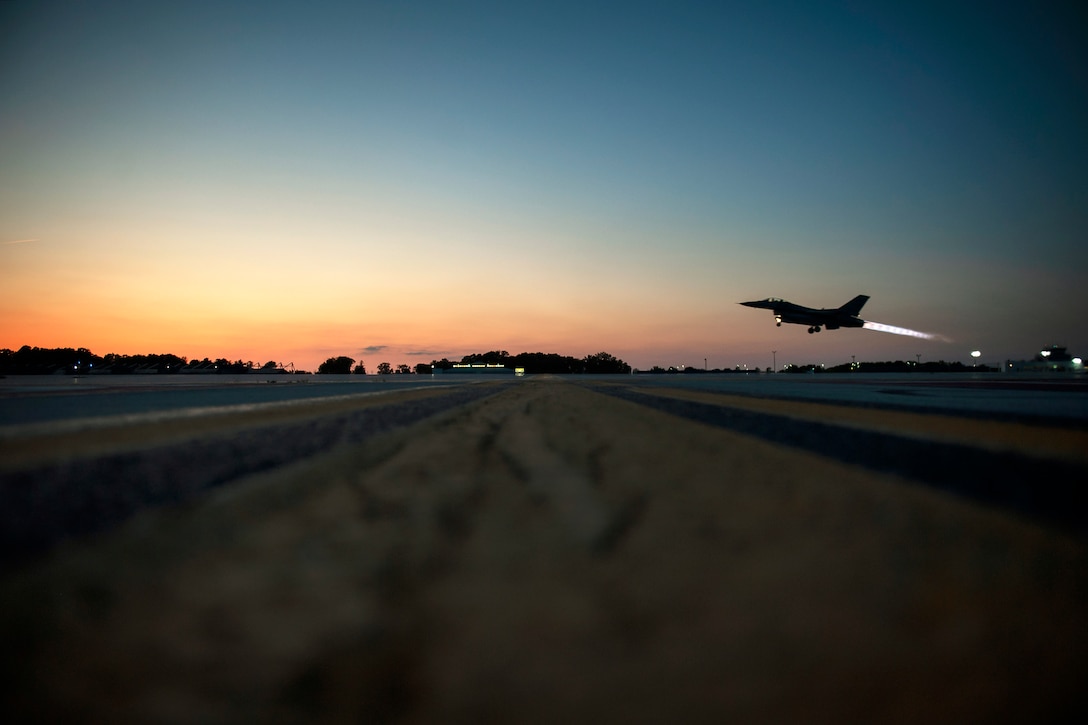Navy Petty Officer 1st Class Adrian Rodziewicz fires a line to the USNS Supply in the Baltic Sea, June 16, 2020, during Baltic Operations, an annual maritime exercise in the region.
Providing up-to-date information, news and original content on American Military issues.
Wednesday, June 17, 2020
Urban Ops
Army paratroopers participate in urban operations training under COVID-19 prevention conditions at Caserma Ederle Range in Vicenza, Italy, June 16, 2020.
Naval Knot
Navy Seaman Rose Ramirez ties a bowline knot aboard the USS Russell in the Philippine Sea, June 15, 2020.
Spartan Chaplains Maintain Morale and Faith Despite COVID-19
"COVID started when we got here. We've been dealing with it every day for the past few months," said Army Chaplain (Lt. Col.) Douglas Brock, the chaplain for the New York Army National Guard's 42nd Infantry Division.
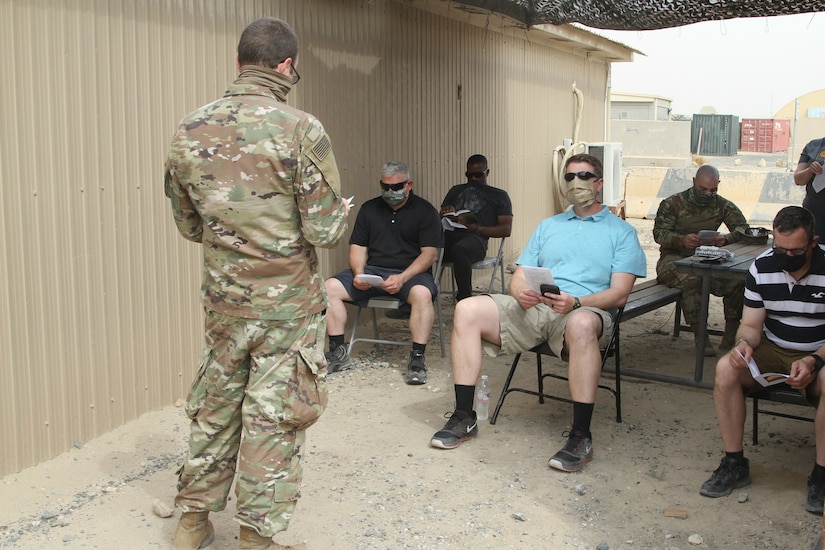
One of the largest impacts COVID-19 had on the task force's installation was the suspension of church services, Brock said.
"So we moved the chapel part of Sunday services to virtual," he said. "For example, my chapel has a Facebook page/group in which some of my chaplain team are posting Sunday messages, or daily messages and engaging with people."
The Facebook group Brock runs is called "AJ Contemporary Family." The Spartan chaplains believe the group makes it easier for soldiers to fulfill their spiritual needs, even if they cannot physically attend services.
"I don't know how well that's impacting our soldiers here on the camp, but we see that people are looking at it," Brock said. "They’re liking it. You have visibility on how many people have looked and how many people have liked and shared, and we’ve seen some action there, so it’s doing its mission."
Brock's social media group isn’t the only service in town. Others have followed suit.
"There are others; in fact, every chaplain program on post has a Facebook group." Brock said.
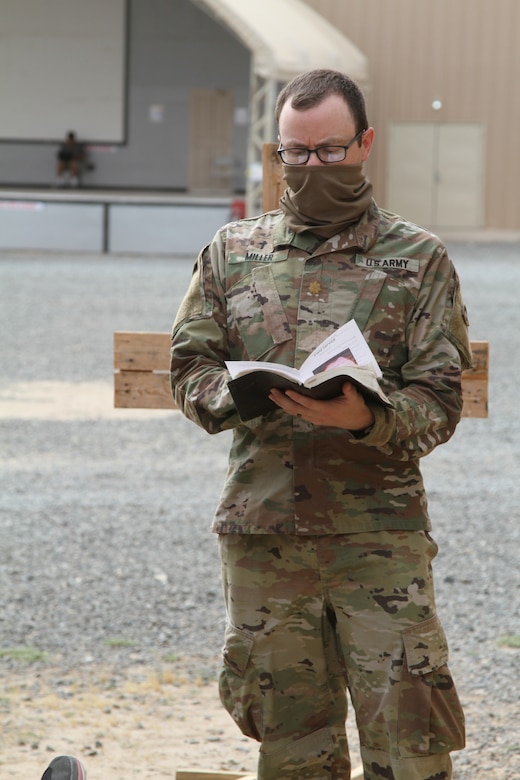
Army Chaplain (Capt.) Matthew Granahan, the chaplain for Task Force Hellhound, 3rd Ordnance Battalion, also has an online group. While keeping up to date with his own social media group, Granahan also works to provide support to soldiers who reside in quarantine or isolation.
"I will stand outside the wire, and soldiers will come up to me on the other side to gather together for a small service," Granahan said. "Sometimes, only one or two will show up, but I'll be there for whoever needs to hear the message."
Virtual services are not the only method for tending to the faithful. Some small-scale services take place outdoors to maintain some semblance of normalcy.
"'When is service?' is one of the questions that I've been asked my whole career. Being able to answer that question reinforces that sense of normalcy, at least for National Guard soldiers that are used to field services."Brock said.
The services appear to have a positive effect on the soldiers who attend, Brock said, but the real struggle concerns current events on the home front. "In talking to my soldiers and talking to my chaplains," he said. "I'm finding that the biggest impact on morale is what's going on at home."
While Spartan soldiers deal with COVID-19, their families at home deal with multiple issues, including quarantine, potential loss of jobs and the increasing civil unrest related to recent events that have taken place in the United States. Without being able to be there for their families, soldiers are turning to their faith to cope.
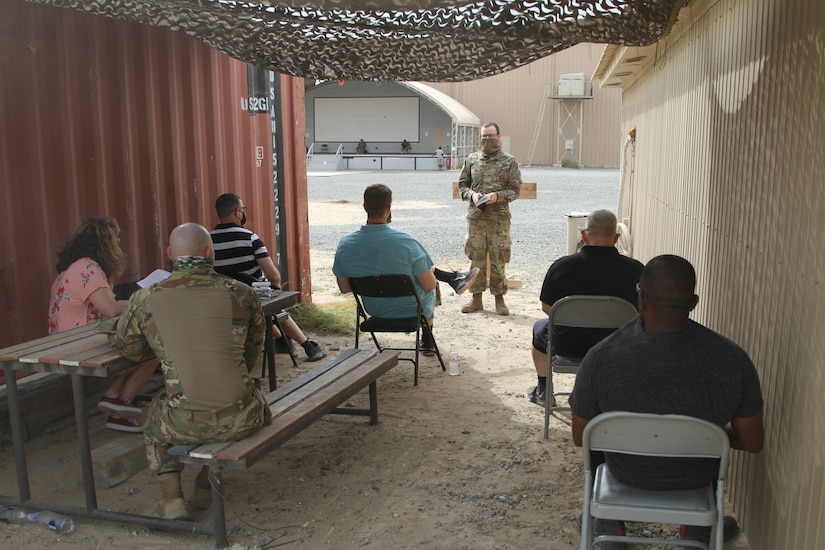
"According to one soldier, what's hurting morale is the general feeling of ‘My wife and children are going through so many crises at home, and I'm not there to be a part of that,'" Brock said.
With all that going on in the world, Brock still sees this as a chance for soldiers to grow, and he looks at the situation with optimism, which he tries to share in his message.
"We talk a lot now about finding joy in trials and hardships," Brock said. "It's about recognizing God is in control, he can be trusted, he is good, there is hope and justice. We're recognizing that trials and hardship build us; it builds character and makes us stronger."
Brock and his three chaplains from the 42nd are all Christians, but they have made sure to provide opportunities to soldiers of other faiths to practice their beliefs.
"Since COVID, services have largely been virtual. Usually, Ramadan would include celebrating in gathering, and even surrounding nations cut that off," Brock said. "Like the Christians, they are not able to gather in large numbers, but we made provisions for that and provisions for Passover."
Brock wanted to give a message of hope to all the soldiers of Task Force Spartan.
"Rejoice in trial," he said, "Rejoice in trial because we recognize that hardship in trial is how we grow. Think of a gem. Think of basic training. Whatever it is you think of, it's in the hardship that you grow. I encourage you to reconnect with your faith and look for hope outside of your circumstances. Connect with someone, and if you need chaplain help, please reach out to us. So Amen, and Rainbow, never forget."
(Army Sgt. Andrew Valenza is assigned to Task Force Spartan.)
COVID-19 Presents Opportunity for Cooperation, Readiness
Naval Medical Research Unit San Antonio is giving recent graduates of the Medical Education and Training Campus Biomedical Equipment Technician School practical experience by attacking maintenance backlogs caused by the COVID-19 pandemic.
''Because of the COVID-19 closure, we got behind on our preventive maintenance inspections,'' said Navy Chief Petty Officer David Snow, the senior enlisted leader of the research unit.
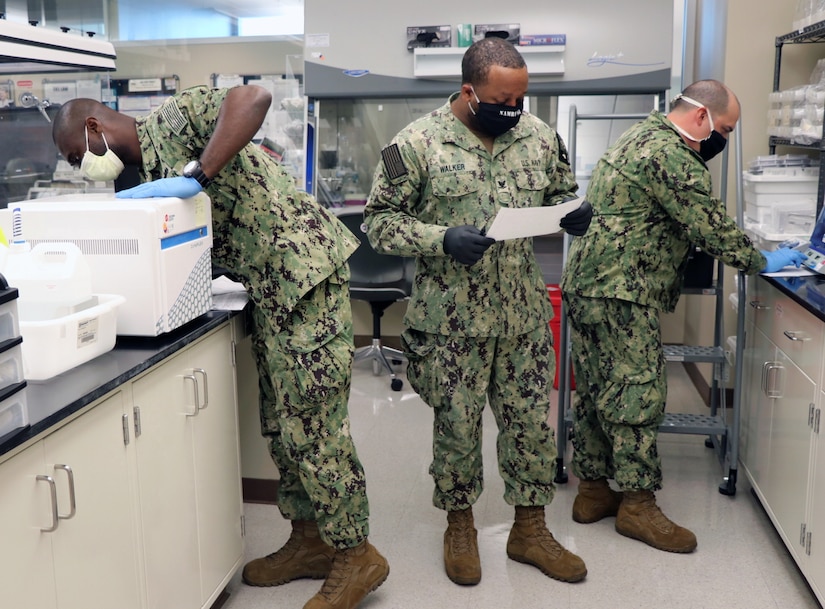
More than 1,300 pieces of medical and dental research equipment are in worksites at the Tri Service Research Laboratory and at the Battlefield Health Trauma Building, both located at Joint Base San Antonio-Fort Sam Houston, Texas.
Snow and two defense contractors, all former Navy BMET instructors at the school, are maintaining NAMRU-SA's biomedical equipment.
''It's a daunting task for three individuals,'' Snow said. ''One of the three of us is there supervising and doing quality control to ensure everything was done to the manufacturer's specifications.''
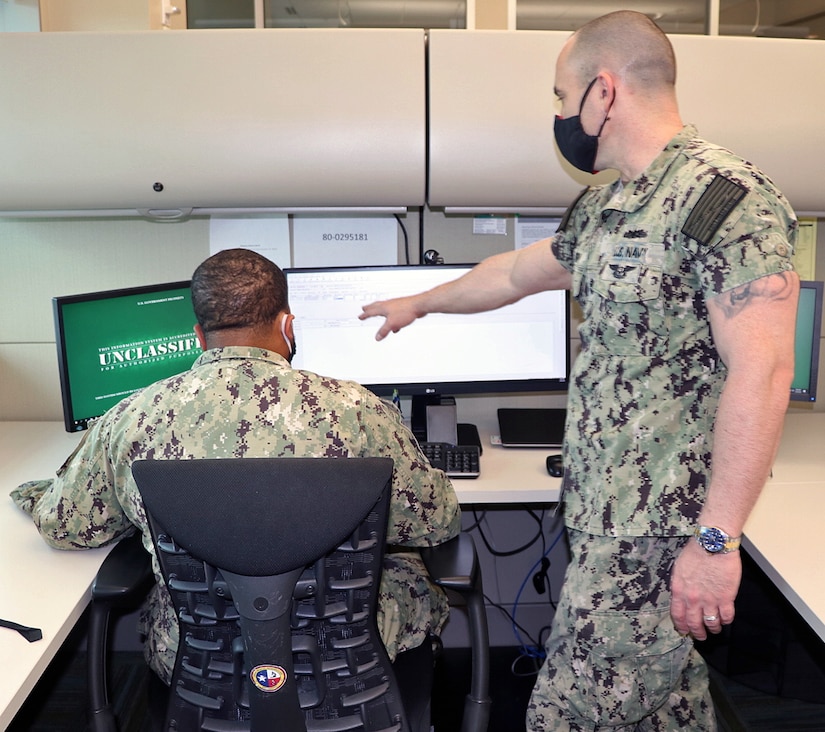
Snow said he knew that if the backlog got worse, it might jeopardize battlefield health research. With a recent memorandum of understanding between NAMRU-SA and NMTSC, which allowed for mutual assistance whenever possible, Snow was able to gain support from the executive officers of both commands, and eight recent BMET graduates reported for work at NAMRU-SA on May 18.
The new BMET graduates work with NAMRU-SA for three eight-hour days each week to aid in reducing the maintenance backlog.
The new graduates document their work in the Defense Medical Logistics Standard Support, where their efforts are reviewed for accuracy. It's a confidence-builder and exactly what the BMETs will be doing when they get to their shops.
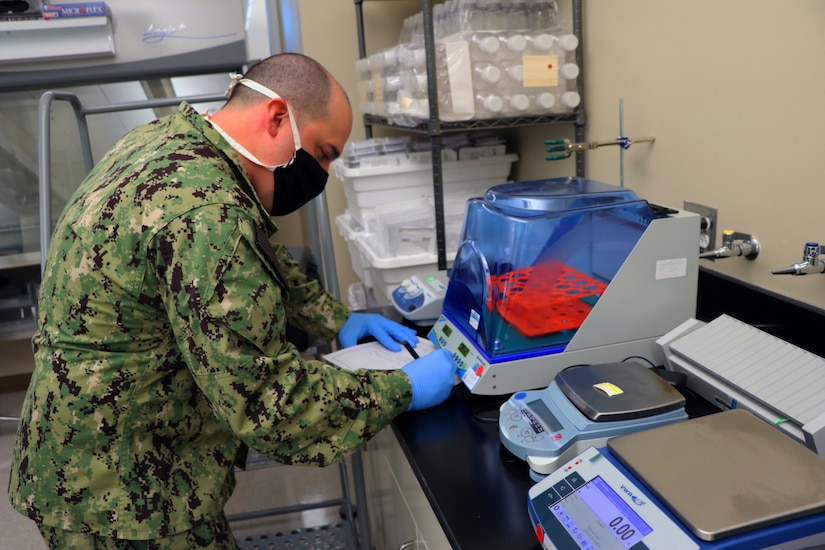
''I was a little bit nervous about leaving here because I have never been a BMET before,'' Navy Petty Officer 3rd Class Benjamin Walker said. Prior to attending the BMET course, Walker was a Navy dental technician. His next assignment is at Naval Medical Center Portsmouth, Virginia.
''Having this experience is going to help me slide into my next assignment pretty smoothly,'' he said.
(Randy Martin is assigned to Naval Medical Research Unit San Antonio.)
Night Flight
An Air Force F-16 Fighting Falcon assigned to the Ohio National Guard takes off in Swanton, Ohio, June 16, 2020, for a nighttime training mission.
Esper Gets Firsthand Look at Air Force Basic Training Amid COVID-19 Pandemic
Defense Secretary Dr. Mark T. Esper visited Air Force basic military training cadre and recruits, as well as members of the Air Force Recruiting Service, for a firsthand look at how the service transforms citizens into airmen.

Esper, accompanied on yesterday's visit by Senior Enlisted Advisor to the Chairman Ramón "CZ" Colón-López, observed how the 37th Training Wing, with the support of a tri-wing partnership with the 502nd Air Base Wing and 59th Medical Wing, has protected airmen during the COVID-19 pandemic. The traveling party adhered to all Centers for Disease Control and Prevention and Defense Department social distancing guidelines to ensure protection of their health and those around them.
"The basic military training mission remains absolutely vital to renew our air and space forces and underwrites our ability to defend the nation and deliver air and space power any time, any place," Esper said. "The entire team here has demonstrated what fighting through COVID-19 looks like with flexibility and tenacity, ensuring the safety of the recruiting, training and education pipeline."
The first stop was at Basic Military Training's Pfingston Reception Center for an overview of Gateway Wing operations and an in-depth look at how officials have adjusted operations amid the pandemic to continue developing the airmen needed to ensure readiness, including restriction of movement implementation, person-under-investigation and isolation operations.
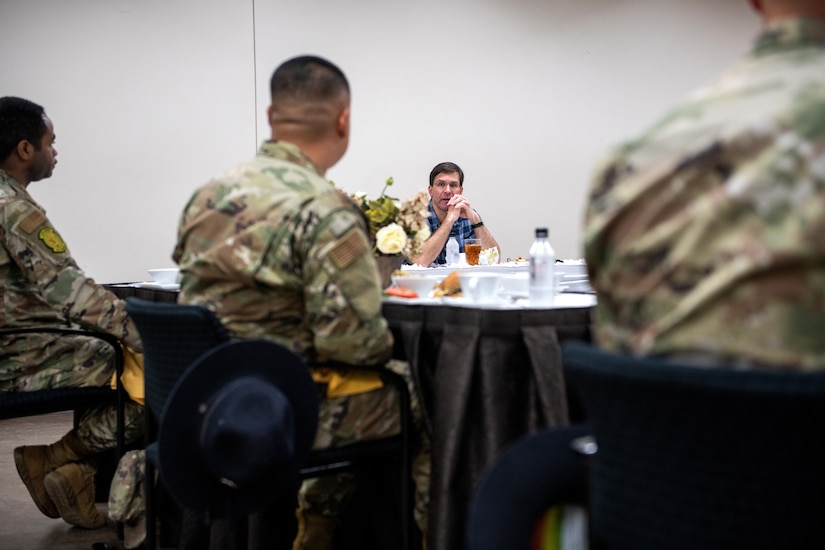
More than 34,500 airmen will graduate from Air Force basic training in fiscal year 2020, and the wing has graduated more than 8,500 airmen since March 16, when the service first implemented a 14-day restriction of movement protocol for new accessions arriving to training. Since May 19, 100% of new recruits have been tested, and the training campus has been realigned to prevent interaction of airmen in different weeks of training.
"Two of our top priorities during COVID-19 have been the safety of our people and ensuring the mission of national security continues," Esper said. "The rapid implementation of safety protocols here has been extremely successful on both of these fronts, thanks to the partnership of health experts and the BMT team."
Military training instructors and cadre had the opportunity to discuss BMT's tempo, successes and ways forward with Esper before taking him on a walkthrough of new trainee in-processing, daily operations at an airman training complex, as well as the Reid Clinic, where the 59th Medical Wing conducts BMT medical support operations.
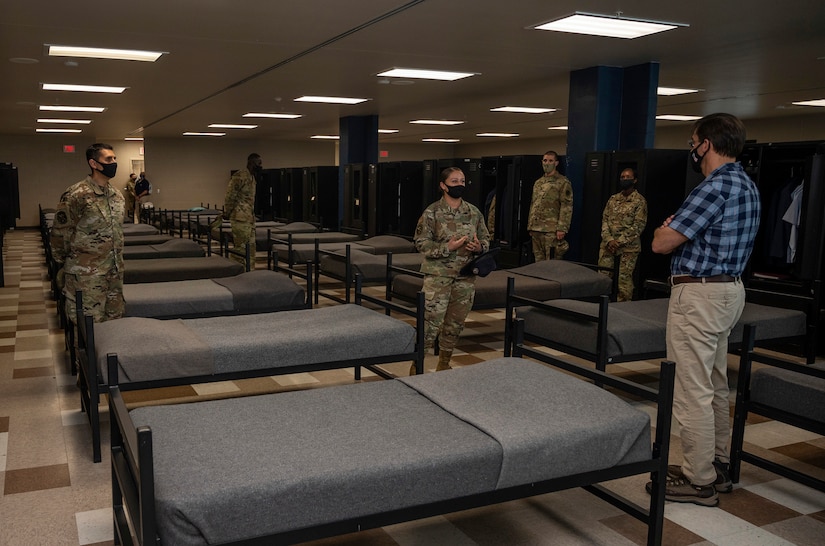
BEAR base, also called tent city, was another stop on the visit. This area was established by the 49th Wing at Holloman Air Force Base, New Mexico, to support potential BMT contingency operations for the Gateway Wing should swing space be required in the COVID-19 environment.
How the service recruits more than 31,000 new accessions every year into the total force was also highlighted for the Defense Department's senior leader, including the use of agile shipping methods to adjust the numbers of airmen reporting to basic military training each week.
"What the U.S. Air Force Recruiting Service has done in response to COVID-19 by being ready to pivot, prioritize, and match applicants to an optimal job and enter-active-duty date on a weekly, and sometimes hourly, basis has been incredible," Esper said.
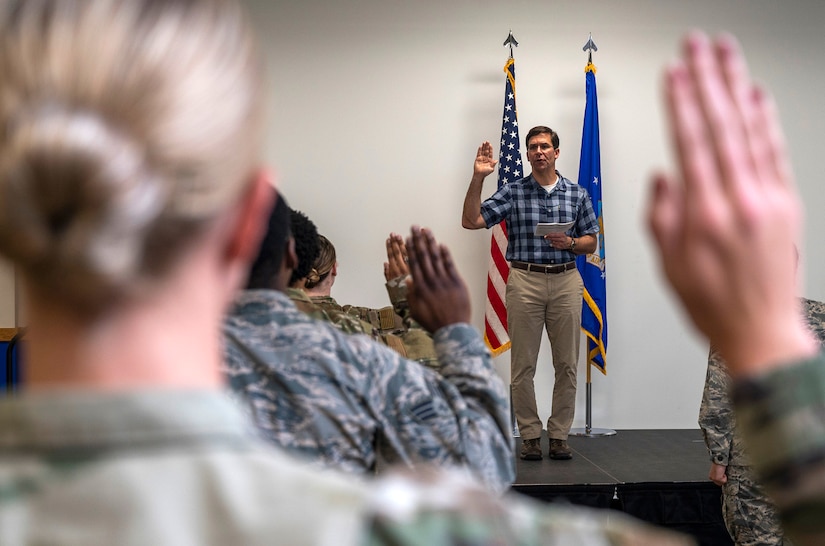
The secretary also learned about the recent integration of the Air Force Reserve and Air National Guard into total force recruiting and the recent rollout of the new "Aim High" phone application by Air Force Recruiting Service, which is aimed at providing better communication to inform and inspire new recruits with embedded tools to guide them into the right Total Force career path as they transition from citizens to service members.
"It's evident BMT's success in the COVID-19 environment can be largely credited to the [military training instructor] corps creating a culture of safety," said Esper. "The work they do year-round laid the foundation for them to adapt swiftly with health recommendations and develop a mentality of early symptom reporting."
(Air Force 1st Lt. Kayshel Trudell is assigned to the 37th Training Wing.)
307th Medical Squadron Returns From Combating COVID-19 in New York
Nine members of the unit deployed to New York in early April, in response to calls for help from hospital staffs overwhelmed by the coronavirus. According to the city government's website, New York endured more than 200,000 confirmed cases from February until the end of May.
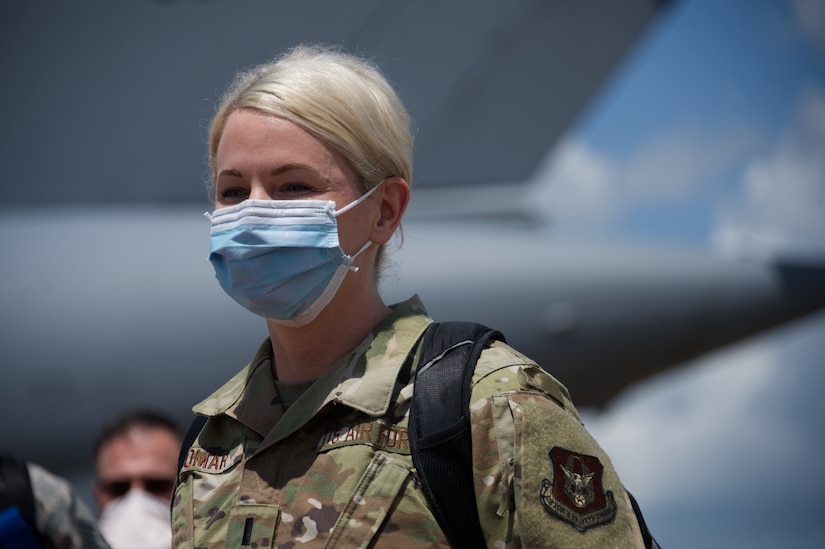
Air Force Staff Sgt. Trevor Talbert, a technician with the 307th Medical Squadron, said the situation was dire when the airmen arrived.
''The civilian staff at my hospital was burned out and depleted,'' he said. ''There were at least 40 patients on my floor, and the numbers didn't start to go down until last week.'' He explained those numbers included a broad age demographic, with patients ranging in age from 20-somethings to octogenarians. ''COVID-19 does not discriminate,'' he said. ''They all struggled.''
The airmen's efforts helped save lives, but they had to learn to deal with losing patients as well. Talbert spoke about leaving the bedsides of patients at the end of a shift and returning the next day to find out they had died. ''It makes you appreciate the important things in life,'' Talbert said. ''It never became normal, and I'm glad because I didn't want to become lax about treating them.''
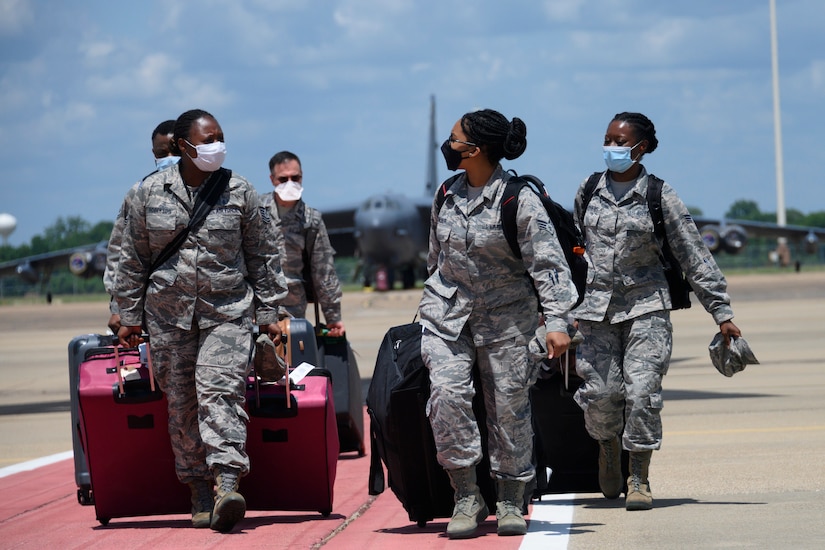
Air Force Capt. Aaron Biggio, a nurse with the 307th Medical Squadron, said hospital staff, patients and even the public showed deep appreciation for their efforts. He said people in the neighborhood would lean out of apartment windows, cheering for them during shift changes. ''I'd get thanked in the streets by total strangers, often with tears in their eyes,'' he said. ''There is no one in New York who doesn't know someone else affected by the disease.''
Talbert said the airmen did their best to serve the patients beyond standard medical care. He recalled using his cellphone to set up video chats between patients and loved ones. ''We were the only family they had while they were under our care,'' he explained.
Most airmen deployed to the region with a focus on direct patient care, but a handful also took part in research efforts designed to learn how to mitigate the effects of COVID-19 on hospital workers.
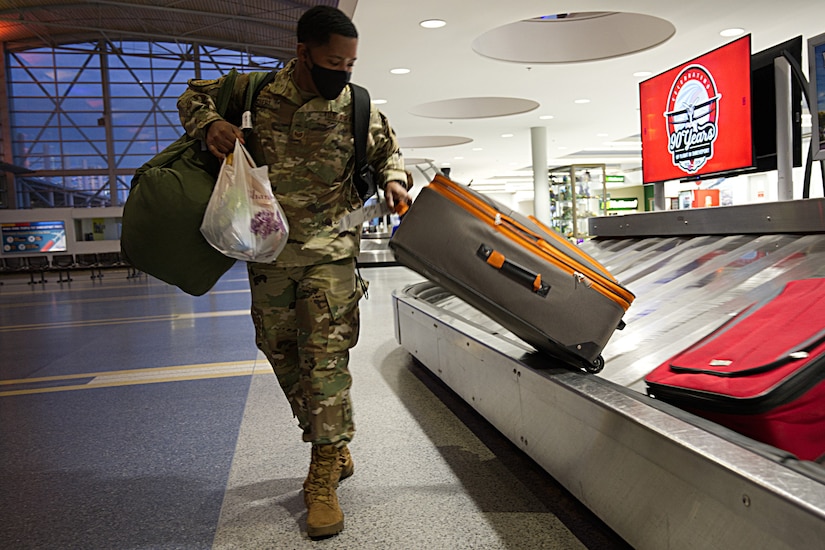
Air Force Tech. Sgt. Cynitra Roberson, the squadron’s immunization noncommissioned officer in charge, took part in patient care, but also served as part of a research team trying to determine if the safety protocols put in place were effective. She and other team members tested almost 500 medical workers. Though the research results remain to be determined, Roberson said, she gained personal insight from the experience.
''It was really neat and something different,'' Roberson explained. ''I worked with really good people, and it was a great experience.''
Throughout the deployment, the airmen worked 12-hour shifts and, in some hospitals, faced patient loads well beyond normal capacity. Biggio said he would do it all again, regardless of the hardships involved.
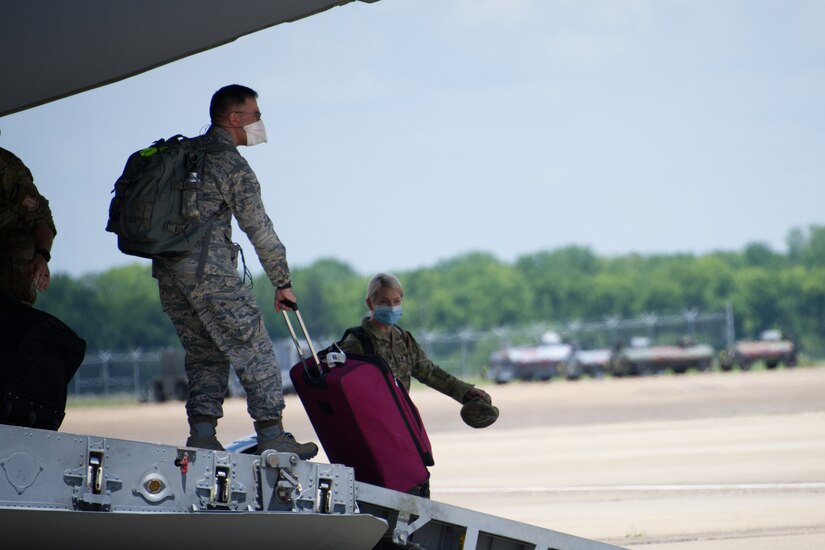
''I'd get back on the plane right now if they would let me,'' he said. ''There’s just something beautiful about the humanity of people coming together to fight through something so gruesome.''
Returning airmen are scheduled to be in quarantine for two weeks before being allowed to return to their military and civilian duties.
(Air Force Master Sgt. Theodore Daigle is assigned to the 307th Bomb Wing.)
